|
Atterbury-Bakalar Air Museum
Ernie Pyle WWII Museum
Five Points Fire Museum
Fort Wayne
Firefighters Museum Freeman
Army Airfield Museum
Virgil "Gus" Grissom Memorial
Hoosier Air Museum
Indiana Military
Museum
Indianapolis Fire Museum McClain
Military Museum
Military Honor Park and Museum
Museum of the Soldier
National
Military History Center/Automotive and Carriage Museum National
Model Aviation Museum
Rolls-Royce Heritage Center, Allison Branch
Ropkey Armor Museum
Wayne County
Historical Museum
Indiana Museums -
Aviation, Military, Automotive and Fire
Fort
Wayne Firefighters Museum
Fort Wayne, IN
Date Visited: 11-15-2014
The Fort Wayne
Firefighters Museum is located in Fire House No.3, which was originally
built in 1893 and then added on to in 1907. Contained inside is an
excellent collection of firefighting equipment that goes back 165 years.
For the historian, or fire engine enthusiast, this museum is well worth
the visit. The museum is open all year but is limited to five days
a week. Originally the station housed six firefighters, four
horses, a hose wagon, and a chemical wagon. Fire House No. 3
served Fort Wayne until 1972.
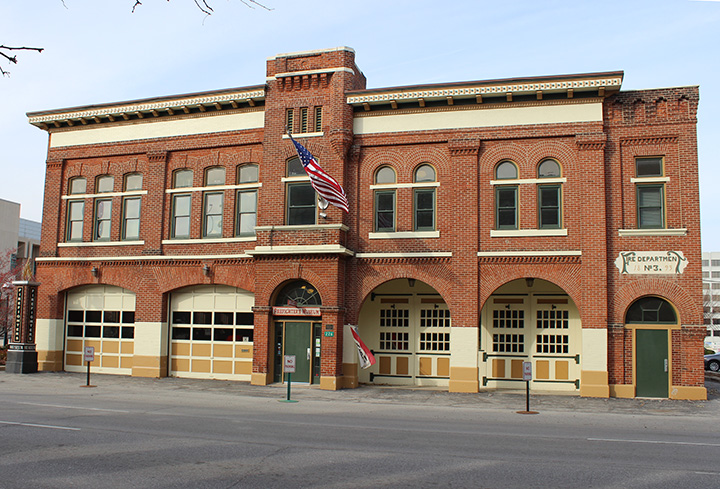
The original fire house was the section consisting of the two bays shown
on the right. The other two were added in 1907.
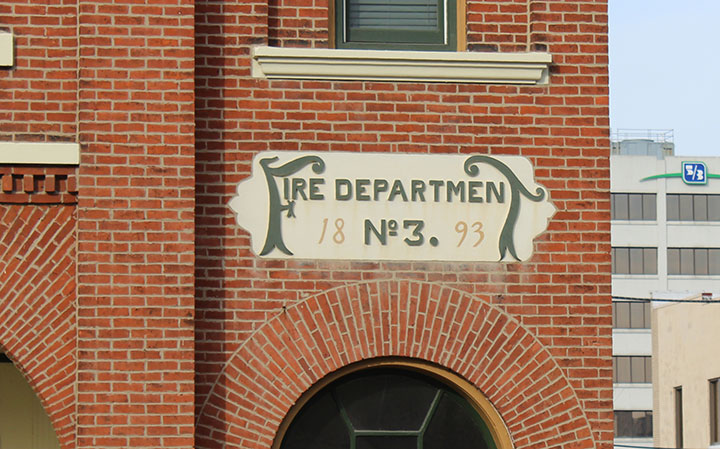
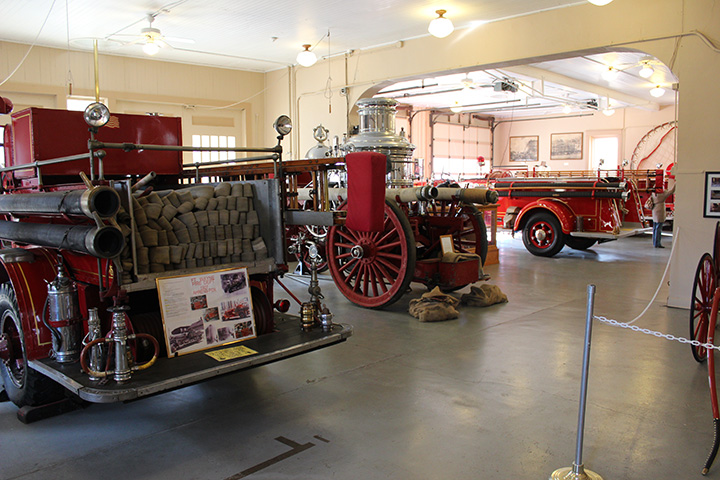
This photo show some of the equipment that is in all four bays.
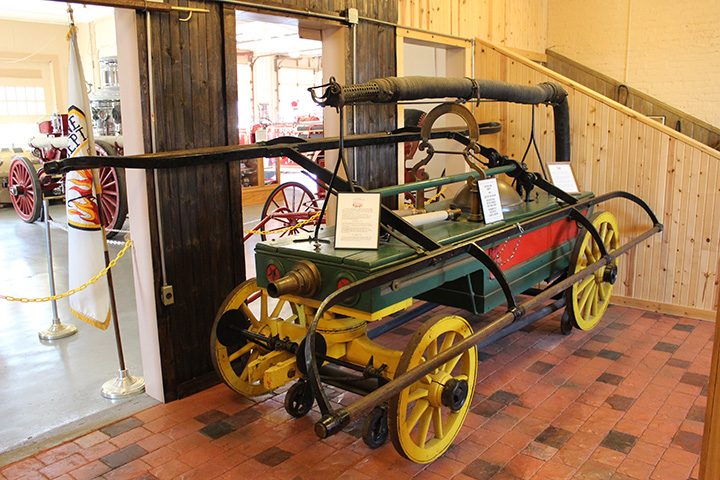
This is the oldest piece of fire apparatus in the building, and is a
1848 Button hand pumper. It actually arrived in Fort Wayne from
Waterford, NY via the Erie and Wabash Canal system. The pumper was
pulled by twelve men to the fire and then twelve men would man the long
handles along the side and start pumping. Due to the exhausting
nature of the manual pumping, a man would only last about 2-3 minutes
before having to be replaced. It would take a large crew of
volunteers to keep one of these going.
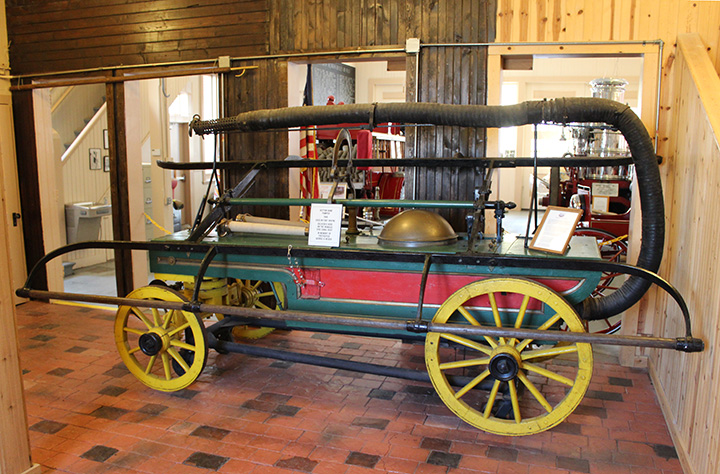
The hose that is overhead would need be placed in a source of water,
such as the Wabash Canal. If that was not available a bucket
brigade would have to manually fill the reservoir at the back of the
unit with water. The Button pumper is located in what originally
were horse stalls.
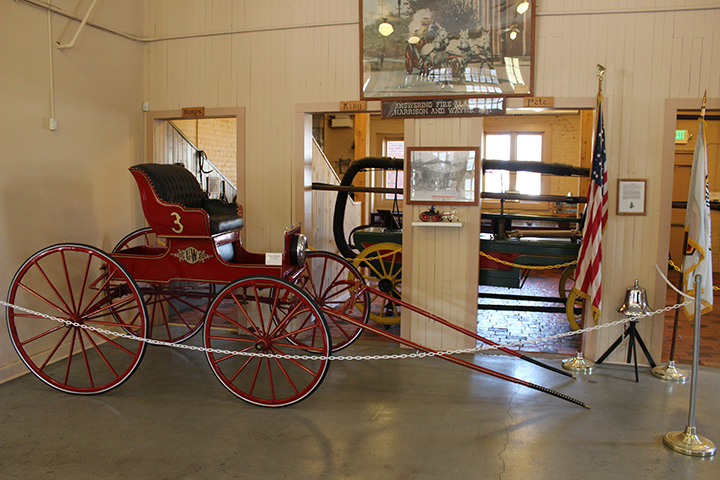
In today's world, fire chiefs and battalion commanders arrive at the
scene of a fire in some sort of SUV. Before the age of the
horseless carriage and SUVs, fire chiefs arrived at the fire in a one
horse buggy like this replica. Behind the buggy are the doors to
four horse stalls.
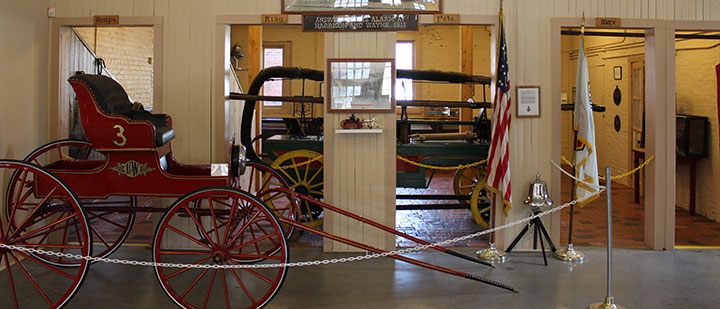
From left to right the horses' names are Bumps, King, Pete and Max.
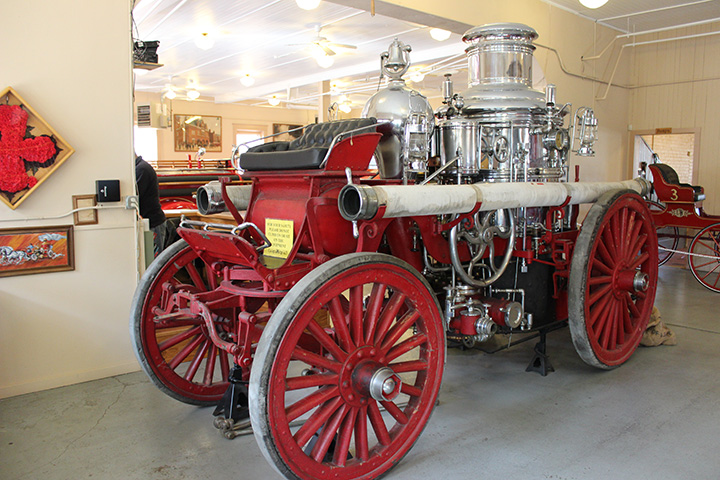
After the hand pumpers came the steam pumper, such at this 1893 Amoskeag
Steamer that served with the Detroit, MI fire department.
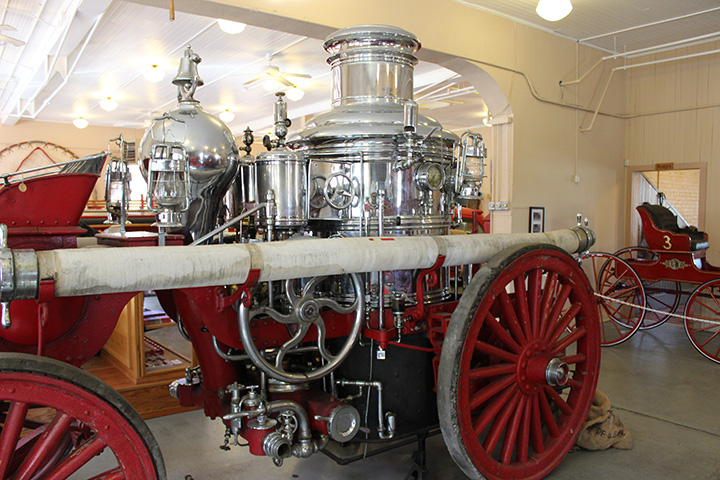
The boiler and related parts are all nickel plated.
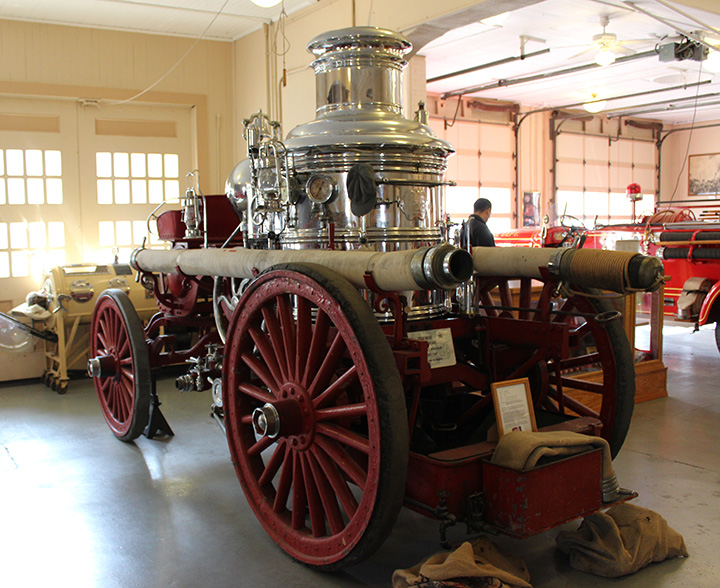
At the bottom rear is the location of the coal furnace that produced the
steam to fire the boiler. While in the station the boiler would be
kept at a near boiling point by a gas fed burner that was inserted, and
then removed with the alarm bell went off. Then a lighted kerosene
soaked piece of wood would be thrown into the furnace to start the coal
on fire.
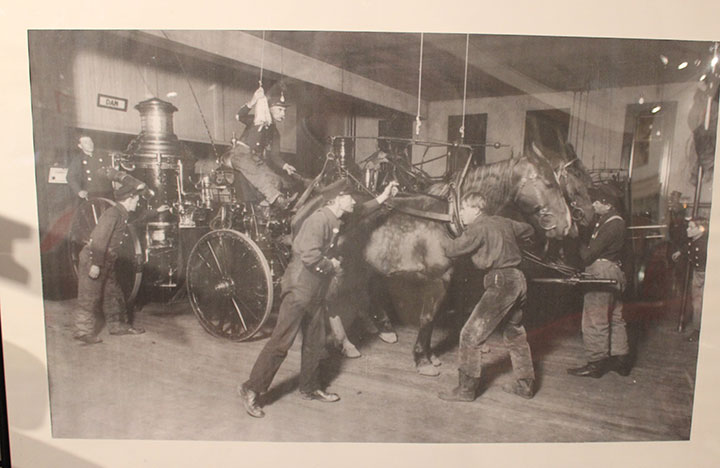
When the alarm bell sounded, the horses were trained to move to their
positions in front of the steamer, or other apparatus they would be
pulling. As seen here there were quick release harnesses located
over the horses, which are being dropped down by the driver and which
had quick fasten hardware. A steamer could be out of the station
house and on the way to the fire in 30 seconds after the alarm sounded.
Even if the horses were out of the station being exercised, if the alarm
bell sounded, they were trained to run back to their positions.
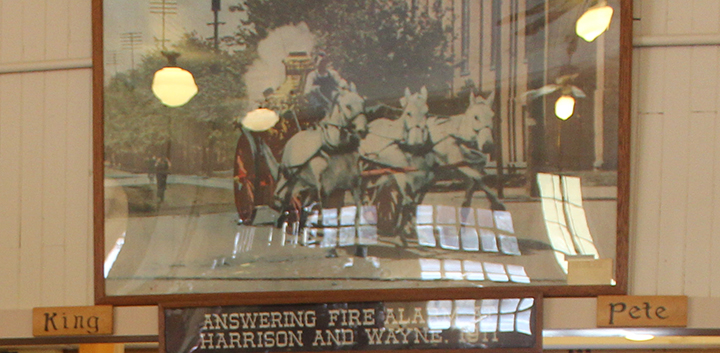
On their way with the horses at a gallop and smoke pouring out of the
boiler. The steamers weighed up to five tons and needed three
strong horses to pull it. (Taking photos of a picture behind glass
in a museum with overhead lights and lots of windows is always a
challenge!)
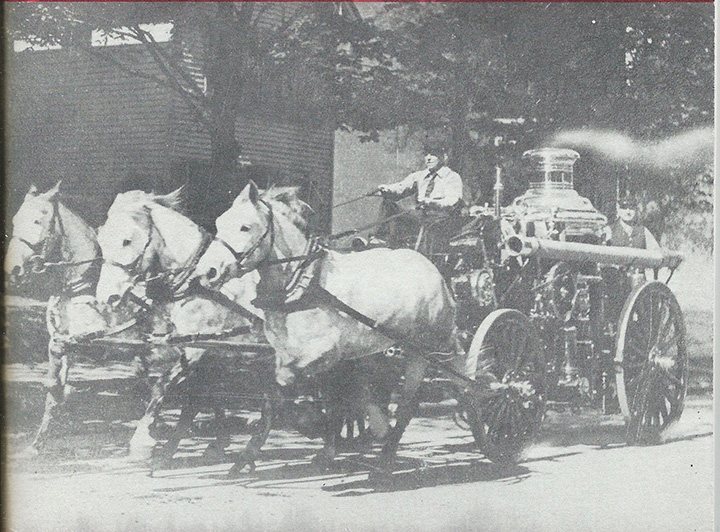
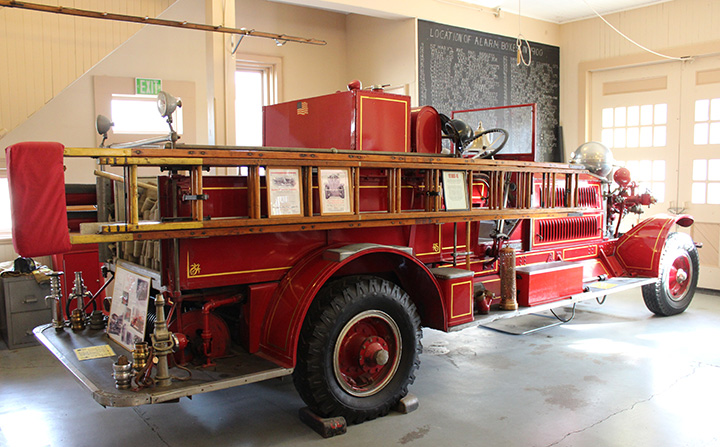
Next in chronological order is this 1927 Ahrens-Fox pumper which served
with the Fort Wayne FD until 1964.
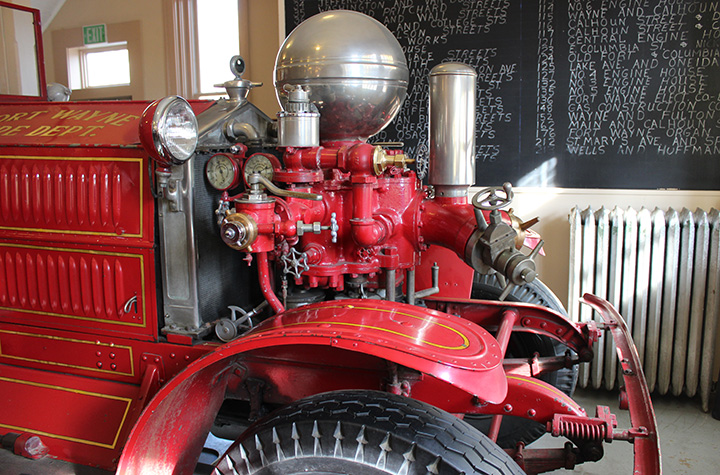
The Ahrens-Fox trademark front end pump and pressure dome.
The next three pieces of fire apparatus are
unique in that they were not built by a company that specialized in this
type of equipment, but were three of 12 units built by the Fort Wayne
Fire Department at its maintenance garage between 1938 to 1943.
Money was tight in the late thirties as the country was still struggling
with the depression, so Fort Wayne bought the the chassis's and drive
trains from International Harvester, which was located in the city, and
then one at time the mechanics added the rest of the equipment.
Some of the added equipment was new and some was salvaged from obsolete
apparatus.
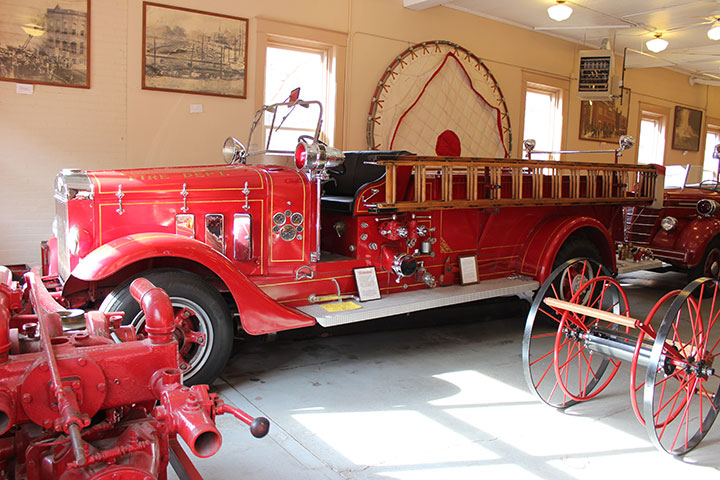
1938 International, Fort Wayne Fire Department "Home Built" Fire truck.
This was the first of the 12 fire trucks built.
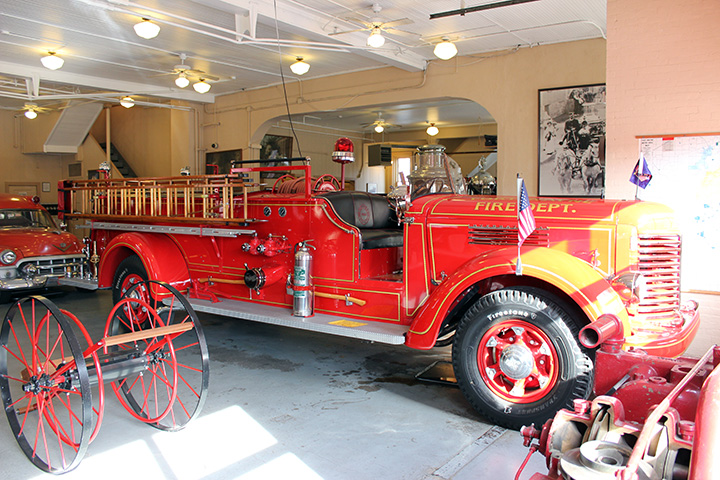
This 1942 International "Home Built" Fire truck underwent three
years of restoration and is used as a "Last Ride" vehicle.
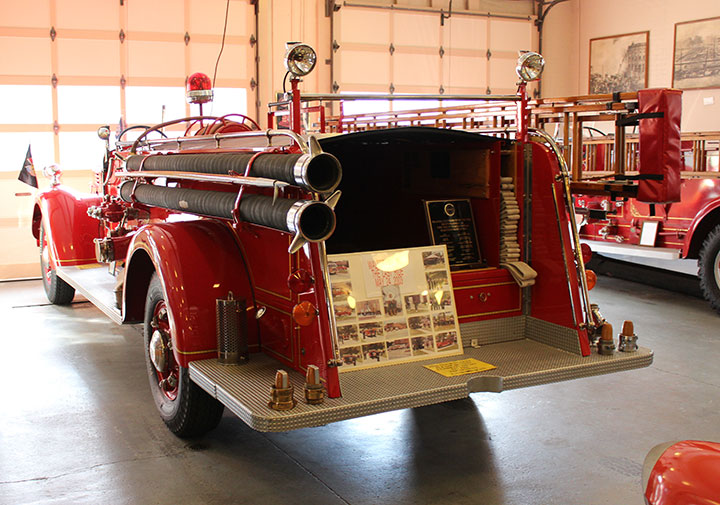
When a retired Fort Wayne fireman passes away, the family can request
this truck be used at the funeral truck, or to lead the precession to
the cemetery.
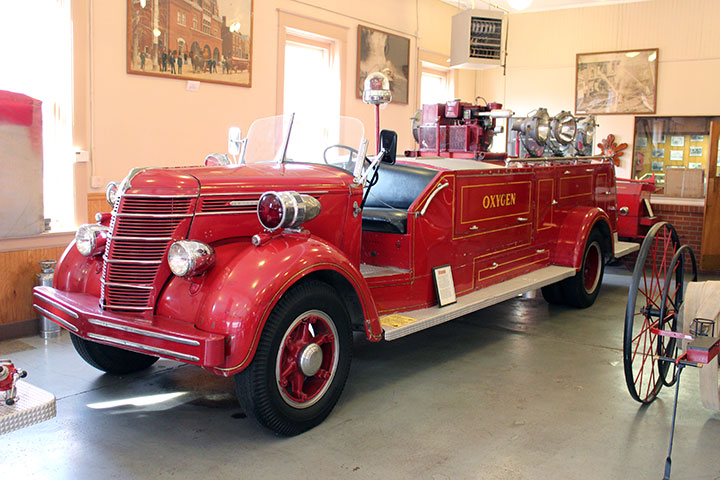
This 1940 International was one of two that in were built into
combination rescue and hose trucks. Later this one was rebuilt
into a oxygen/air truck and served with the Fort Wayne Fire Department
until 1982.
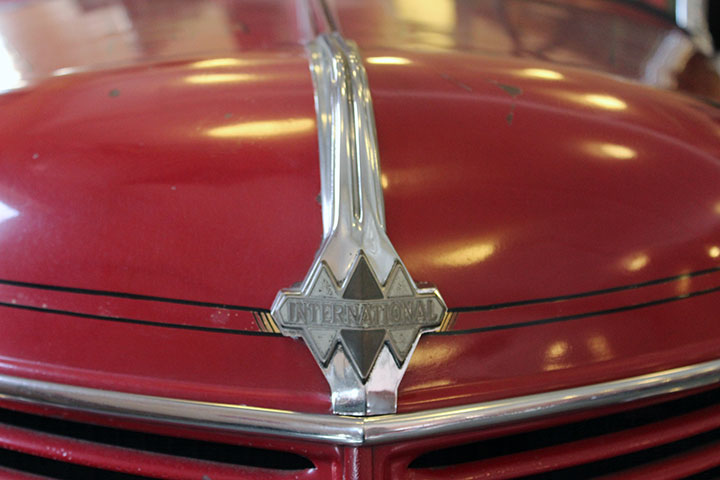
All three of the "Home-Built" trucks on
display still carried the International Emblem.
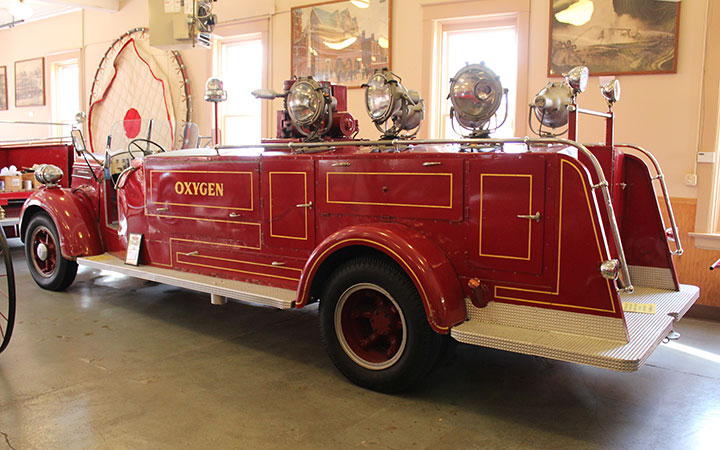
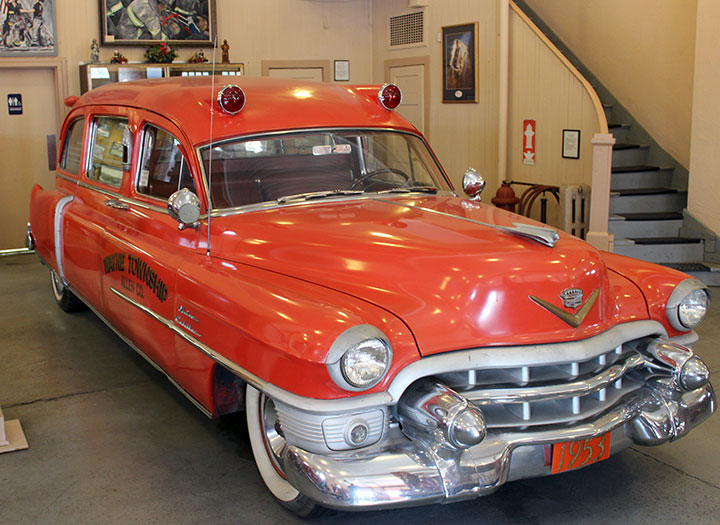
The youngest vehicle in the museum is this 1953 Cadillac ambulance, that
originally served as a hearse for seven years, before serving with a
local volunteer fire department as an ambulance for another seven years.
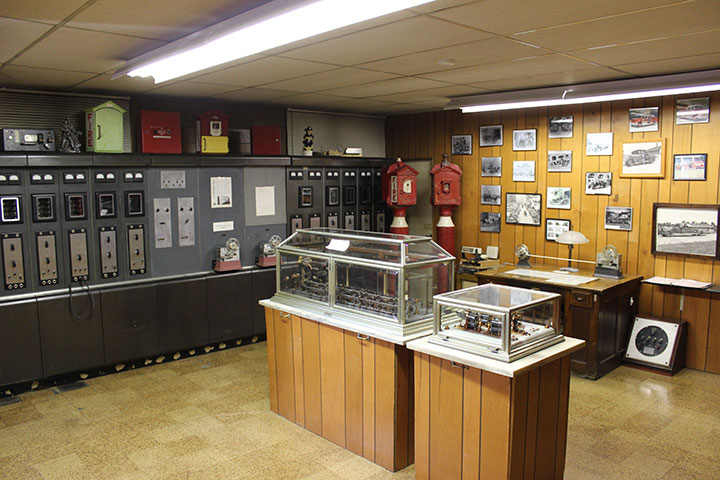
The museum has a very nice display of the equipment that determined
where the alarms were coming in from.
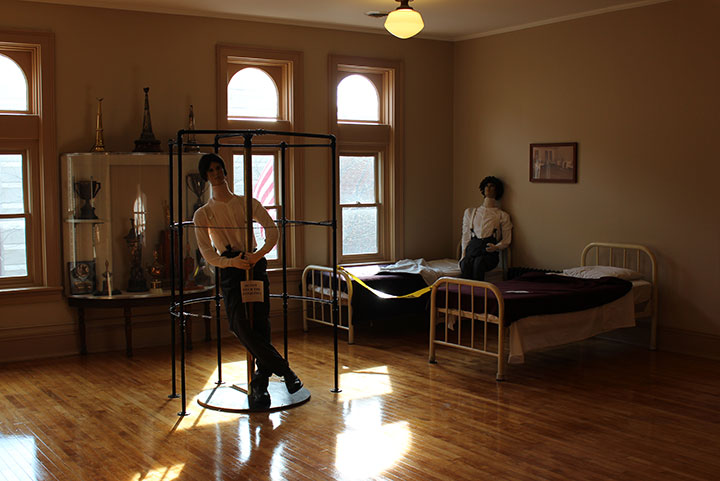
Upstairs in the station when it was active not only served as the
residence for the working firemen on duty, but when the horses were
located here, was storage for oats, hay and straw.
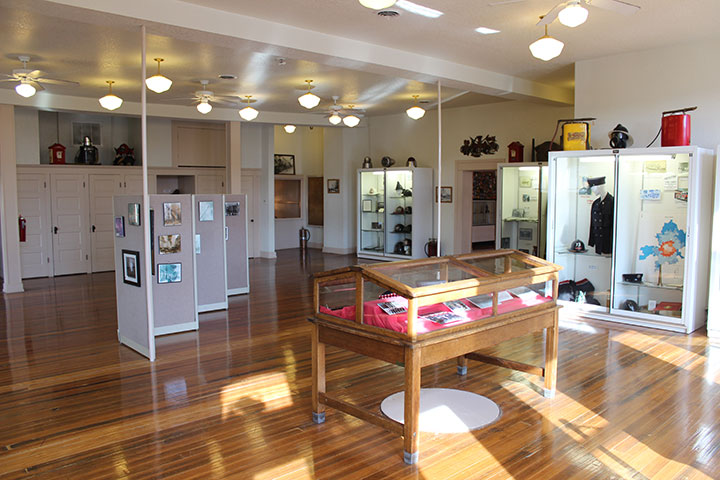
There are some very nice displays upstairs.
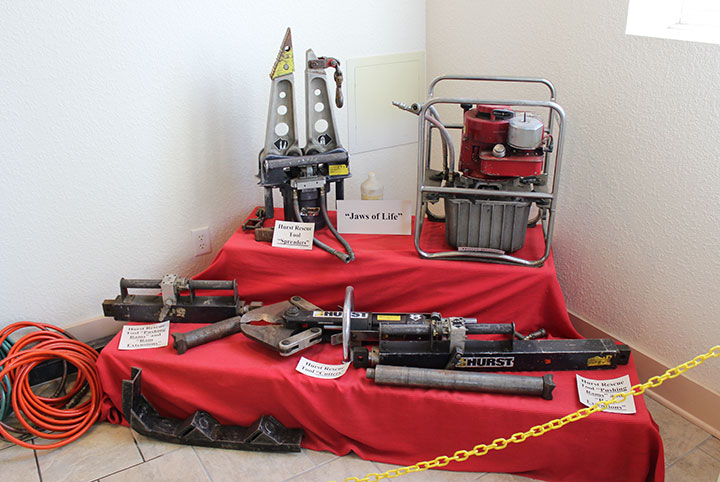
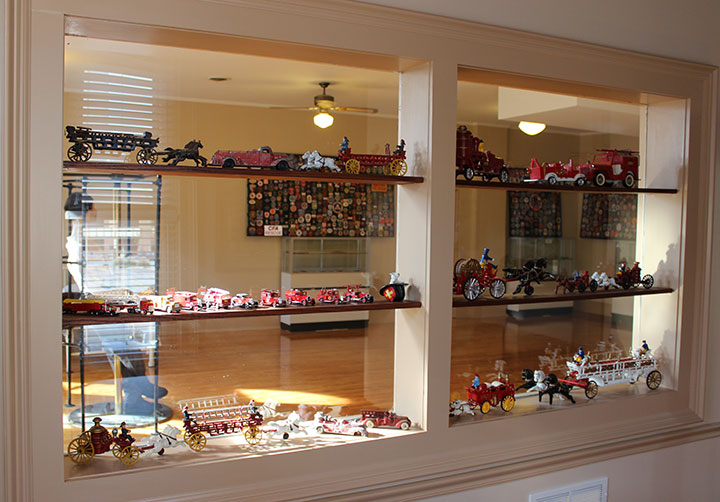
The toy collection.
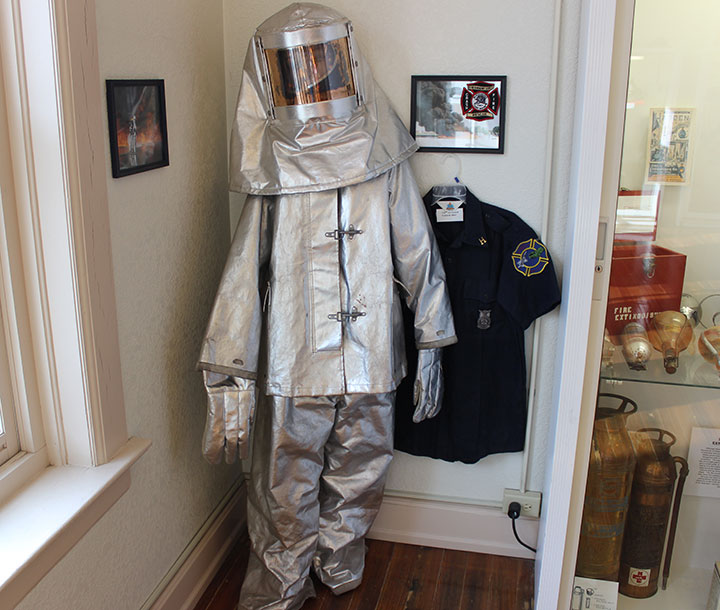
In one corner of the upstairs was this display of equipment and the
uniforms worn by members of the 122nd Fire and Emergency Services with
the Indiana Air National Guard at the nearby Fort Wayne International
Airport.
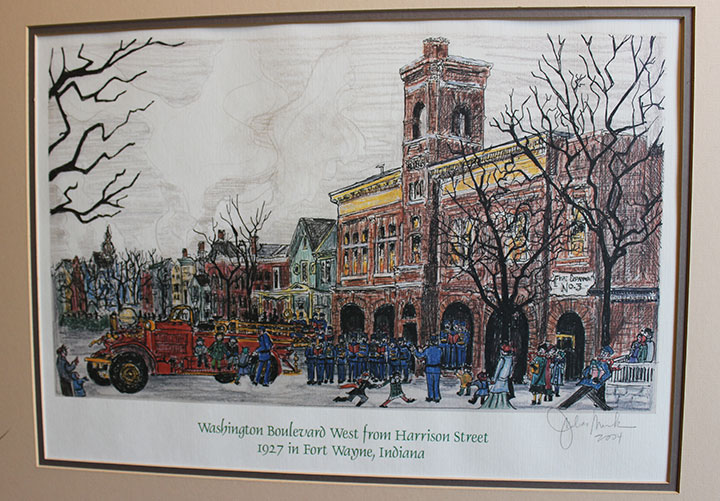
A water color depicting Station No. 3 in 1927.
Other historic sites and museums in Fort
Wayne.
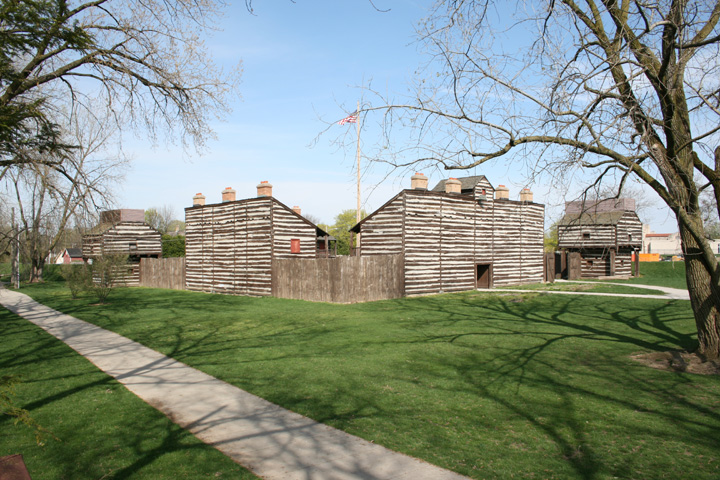
Less than a mile to the north-east from the Fire Museum is a re-creation
of Historic Fort Wayne. The Fort is open the year around for
visitors to look at. Also in area is the Fort Wayne Railroad
Historical Society in New Haven that has limited hours. I have not
yet had an opportunity to visit this museum, but it is on my list.
More photos of Fort Wayne
|





























